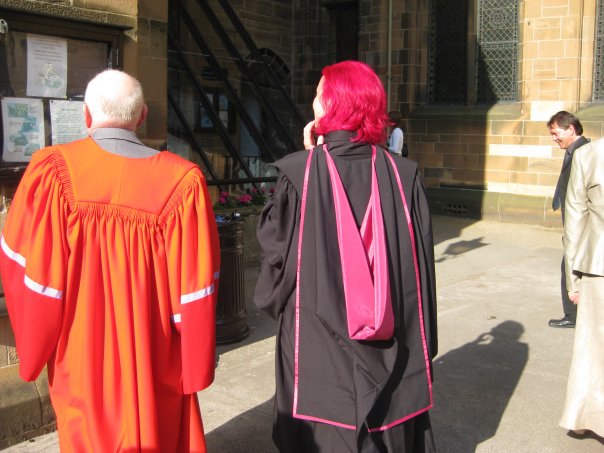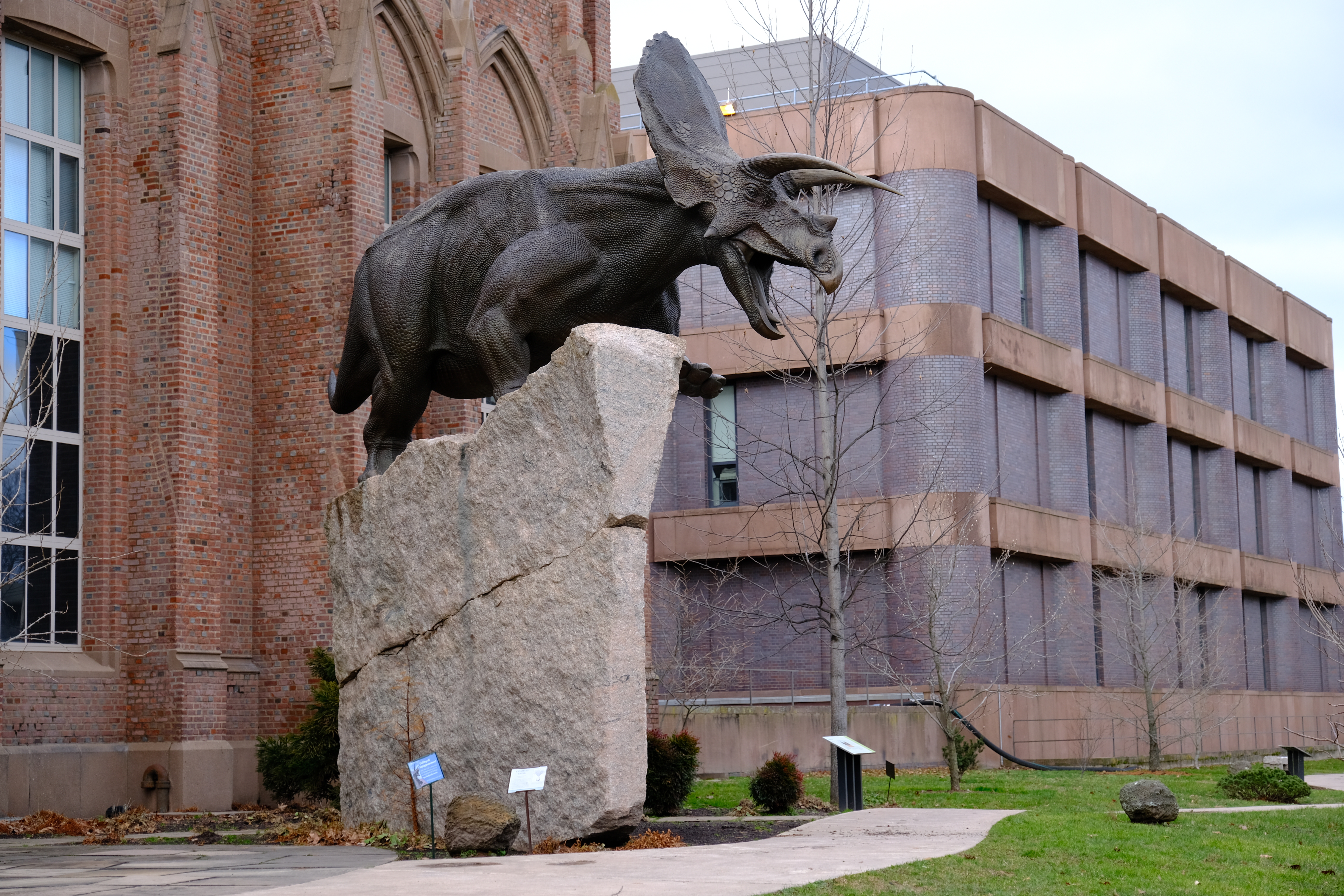|
Irving Rouse
Benjamin Irving Rouse (August 29, 1913 – February 24, 2006) was an American archaeologist on the faculty of Yale University best known for his work in the Greater and Lesser Antilles of the Caribbean, especially in Haiti. He also conducted fieldwork in Florida and Venezuela. He made major contributions to the development of archaeological theory, with a special emphasis on taxonomy and classification of archaeological materials and studies of human migration. Early life Rouse was born on August 29, 1913, in Rochester, New York, the son of Louise Gillespie (Bohachek) and Benjamin Irving Rouse. His maternal grandfather was Czech. His family had been in the plant nursery industry for nearly a century, and Ben (as he was known to family and friends) was planning on continuing in the family business when he enrolled at Yale University in 1930 as a plant science major. His father had also attended Yale as an undergraduate. Education Rouse began his academic career studying forestry an ... [...More Info...] [...Related Items...] OR: [Wikipedia] [Google] [Baidu] |
Rochester, New York
Rochester is a city in and the county seat, seat of government of Monroe County, New York, United States. It is the List of municipalities in New York, fourth-most populous city and 10th most-populated municipality in New York, with a population of 211,328 at the 2020 United States census, 2020 census. The city forms the core of the larger Rochester metropolitan area, New York, Rochester metropolitan area in Western New York, with a population of just over 1 million residents. Throughout its history, Rochester has acquired several nicknames based on local industries; it has been known as "History of Rochester, New York#Rochesterville and The Flour City, the Flour City" and "History of Rochester, New York#The Flower City, the Flower City" for its dual role in flour production and floriculture, and as the "World's Image Center" for its association with film, optics, and photography. The city was one of the United States' first boomtowns, initially due to the fertile Genesee River ... [...More Info...] [...Related Items...] OR: [Wikipedia] [Google] [Baidu] |
Bachelor's Degree
A bachelor's degree (from Medieval Latin ''baccalaureus'') or baccalaureate (from Modern Latin ''baccalaureatus'') is an undergraduate degree awarded by colleges and universities upon completion of a course of study lasting three to six years (depending on the institution and academic discipline). The two most common bachelor's degrees are the Bachelor of Arts (BA) and the Bachelor of Science (BS or BSc). In some institutions and educational systems, certain bachelor's degrees can only be taken as graduate or postgraduate educations after a first degree has been completed, although more commonly the successful completion of a bachelor's degree is a prerequisite for further courses such as a master's or a doctorate. In countries with qualifications frameworks, bachelor's degrees are normally one of the major levels in the framework (sometimes two levels where non-honours and honours bachelor's degrees are considered separately). However, some qualifications titled bachelor's ... [...More Info...] [...Related Items...] OR: [Wikipedia] [Google] [Baidu] |
American Anthropologist
''American Anthropologist'' is the flagship journal of the American Anthropological Association The American Anthropological Association (AAA) is an American organization of scholars and practitioners in the field of anthropology. With 10,000 members, the association, based in Arlington, Virginia, includes archaeologists, cultural anthropo ... (AAA), published quarterly by Wiley. The "New Series" began in 1899 under an editorial board that included Franz Boas, Daniel G. Brinton, and John Wesley Powell. The current editor-in-chief is Elizabeth Chin ( ArtCenter College of Design). The journal publishes research articles from all four subfields of anthropology as well as book reviews and obituaries, and includes sections on Public Anthropologies, Multimodal Anthropologies, and World Anthropologies. The journal also maintains a website with essays, virtual issues, teaching resources, and supplementary material for print articles. Past editors F. W. Hodge (1899–1910) J ... [...More Info...] [...Related Items...] OR: [Wikipedia] [Google] [Baidu] |
American Ethnological Society
The American Ethnological Society (AES) is the oldest professional anthropological association in the United States. History of the American Ethnological Society Albert Gallatin and John Russell Bartlett founded the American Ethnological Society in New York City in 1842. Their goal was to promote research in ethnology and all inquiries involving humans. The early meetings of the AES took place in the homes of the members, where they discussed all aspects of human life, from history and geography to philology and anthropology. The AES was a scholarly institution, in which papers were presented that were later published. In the late 19th century, the AES's focus changed from the evolutionary concerns of ethnology to the academic discipline of anthropology. The AES remained small, due to financial difficulties until the 1920s. In 1916, the AES became the American Ethnological Society, Inc. During this time, it also became associated with Columbia University and linked to the Ame ... [...More Info...] [...Related Items...] OR: [Wikipedia] [Google] [Baidu] |
Society For American Archaeology
The Society for American Archaeology (SAA) is a professional association for the archaeology of the Americas. It was founded in 1934 and its headquarters are in based in Washington, D.C. , it has 7,500 members. Its current president is Daniel Sandweiss. Notable past presidents include Dean R. Snow. The mission statement of the SAA is to expand understanding and appreciation of humanity's past as achieved through systematic investigation of the archaeological record; promote research, stewardship of archaeological resources, public and professional education, and the dissemination of knowledge; and serve the public interest. It organizes a major academic conference every year and publishes several journals, including ''American Antiquity''. Annual meetings The first annual meeting took place in December 1935 in Andover, Massachusetts, and has taken place every year since. Only one meeting, the 8th annual meeting of 1943, did not physically take place. According to the most rec ... [...More Info...] [...Related Items...] OR: [Wikipedia] [Google] [Baidu] |
American Antiquity
''American Antiquity'' is a professional journal published by Cambridge University Press for the Society for American Archaeology, an organization of professional archaeologists of the Americas. The journal is considered to be the flagship journal of American archaeology. ''American Antiquity'' is a quarterly, peer-reviewed journal published in January, April, July and October. Each copy of the journal has about 200 pages, with articles covering topics such as archaeological method, archaeological science, pre-Columbian In the history of the Americas, the pre-Columbian era, also known as the pre-contact era, or as the pre-Cabraline era specifically in Brazil, spans from the initial peopling of the Americas in the Upper Paleolithic to the onset of European col ... societies or civilizations, ongoing work at archaeological sites, and interim reports of excavations. The journal also includes book reviews, editorials, and comments and responses on previous articles. ''Americ ... [...More Info...] [...Related Items...] OR: [Wikipedia] [Google] [Baidu] |
Curator
A curator (from , meaning 'to take care') is a manager or overseer. When working with cultural organizations, a curator is typically a "collections curator" or an "exhibitions curator", and has multifaceted tasks dependent on the particular institution and its mission. The term "curator" may designate the head of any given division, not limited to museums. Curator roles include "community curators", "literary curators", " digital curators", and " biocurators". Collections curator A "collections curator", a "museum curator", or a "keeper" of a cultural heritage institution (e.g., gallery, museum, library, or archive) is a content specialist charged with an institution's collections and involved with the interpretation of heritage material including historical artifacts. A collections curator's concern necessarily involves tangible objects of some sort—artwork, collectibles, historic items, or scientific collections. In smaller organizations, a curator may have sole r ... [...More Info...] [...Related Items...] OR: [Wikipedia] [Google] [Baidu] |
Doctorate
A doctorate (from Latin ''doctor'', meaning "teacher") or doctoral degree is a postgraduate academic degree awarded by universities and some other educational institutions, derived from the ancient formalism '' licentia docendi'' ("licence to teach"). In most countries, a research degree qualifies the holder to teach at university level in the degree's field or work in a specific profession. There are a number of doctoral degrees; the most common is the Doctor of Philosophy (PhD), awarded in many different fields, ranging from the humanities to scientific disciplines. Many universities also award honorary doctorates to individuals deemed worthy of special recognition, either for scholarly work or other contributions to the university or society. History Middle Ages The term ''doctor'' derives from Latin, meaning "teacher" or "instructor". The doctorate (Latin: ''doctoratus'') appeared in medieval Europe as a license to teach Latin (''licentia docendi'') at a university. Its ... [...More Info...] [...Related Items...] OR: [Wikipedia] [Google] [Baidu] |
Anthropology
Anthropology is the scientific study of humanity, concerned with human behavior, human biology, cultures, society, societies, and linguistics, in both the present and past, including archaic humans. Social anthropology studies patterns of behaviour, while cultural anthropology studies cultural meaning, including norms and values. The term sociocultural anthropology is commonly used today. Linguistic anthropology studies how language influences social life. Biological anthropology, Biological (or physical) anthropology studies the biology and evolution of Human evolution, humans and their close primate relatives. Archaeology, often referred to as the "anthropology of the past," explores human activity by examining physical remains. In North America and Asia, it is generally regarded as a branch of anthropology, whereas in Europe, it is considered either an independent discipline or classified under related fields like history and palaeontology. Etymology The abstract noun ''wikt ... [...More Info...] [...Related Items...] OR: [Wikipedia] [Google] [Baidu] |
Cornelius Osgood
Cornelius Berrien Osgood (March20, 1905– January6, 1985) was an American anthropologist and ethnologist. He is known for his research among the Athapaskan-speaking people of interior Alaska. Life Osgood was born in Winchester, Massachusetts, on March20, 1905. He married Harriett Ellen Keeney on September25, 1930. They had two daughters. On December 23, 1963, he married his second wife, Soo Sui-ling. Osgood died on January 6, 1985. Education and career Osgood attended the University of Chicago, and received the degrees of Ph.B. in 1927 and Ph.D. in 1930, respectively. Osgood served as the Curator of Anthropology at the Yale Peabody Museum The Peabody Museum of Natural History at Yale University (also known as the Yale Peabody Museum of Natural History or the Yale Peabody Museum) is one of the oldest, largest, and most prolific university natural history museums in the world. It ... from 1934 to 1973. He brought significant collections to the museum from his rese ... [...More Info...] [...Related Items...] OR: [Wikipedia] [Google] [Baidu] |
Peabody Museum Of Natural History
The Peabody Museum of Natural History at Yale University (also known as the Yale Peabody Museum of Natural History or the Yale Peabody Museum) is one of the oldest, largest, and most prolific university natural history museums in the world. It was founded by the philanthropist George Peabody in 1866 at the behest of his nephew Othniel Charles Marsh, an early paleontologist. The museum is best known for the Great Hall of Dinosaurs, which includes a mounted juvenile ''Brontosaurus'' and the mural '' The Age of Reptiles''. The museum also has permanent exhibits dedicated to human and mammal evolution; wildlife dioramas; Egyptian artifacts; local birds and minerals; and Native Americans of Connecticut. In 2020, the Peabody Museum closed for its "first comprehensive renovation in 90 years." It reopened, with more than twice the exhibition space, on March 26, 2024. Description The Peabody Museum is located at 170 Whitney Avenue in New Haven, Connecticut and is staffed by nearl ... [...More Info...] [...Related Items...] OR: [Wikipedia] [Google] [Baidu] |
Great Depression
The Great Depression was a severe global economic downturn from 1929 to 1939. The period was characterized by high rates of unemployment and poverty, drastic reductions in industrial production and international trade, and widespread bank and business failures around the world. The economic contagion began in 1929 in the United States, the largest economy in the world, with the devastating Wall Street stock market crash of October 1929 often considered the beginning of the Depression. Among the countries with the most unemployed were the U.S., the United Kingdom, and Weimar Republic, Germany. The Depression was preceded by a period of industrial growth and social development known as the "Roaring Twenties". Much of the profit generated by the boom was invested in speculation, such as on the stock market, contributing to growing Wealth inequality in the United States, wealth inequality. Banks were subject to laissez-faire, minimal regulation, resulting in loose lending and wides ... [...More Info...] [...Related Items...] OR: [Wikipedia] [Google] [Baidu] |





